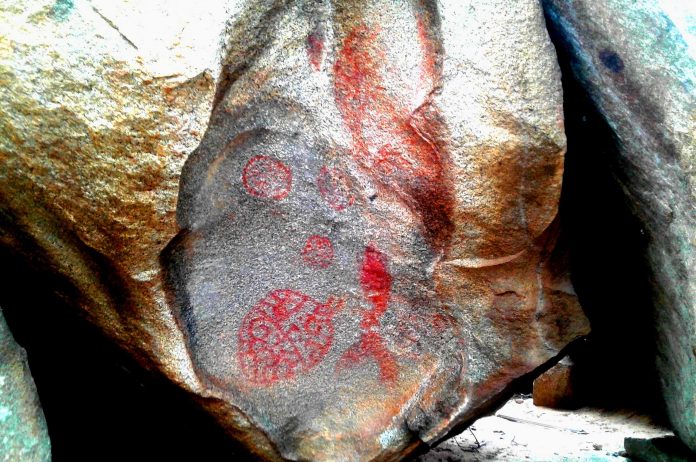Article by Etnia Nativa call us 592 2702 and book your experience!
Together we all can be Aruba’s rangers, guardians of our patrimony. Let’s create a consciousness that rock Art is our heritage; yes, much more than just meaningless doodles made by our Aruban fore fathers. Contrary to popular belief it was not created by some underdeveloped cannibal inhabitants of mythical epoch, it does not reflect buried treasure maps. Neither were they meant to just scare demons or bad spirits away. What rock Art in general does provide is means of understanding the sacred as well as the mundane perspective of life “in our case” with what prehistoric Amerindian cultures as a community could regionally and insular have experienced by means of rock art expressions and practices relating to it.
What interesting is that the official native rock artist was often a mystical Medicine Man, teacher, the color pigment mixer and a herb expert, however most probably because of his knowing and communal healing powers and communication with the supernatural world. A continuation of the early shamanic and endemic believes of most tribal societies, most likely remanence which survived from before the migrations crossing Beringia over twenty thousand years ago.
Pecking into the rock to create Petroglyphs was a method to accomplish with a hammer stone or stone chisel. Different pecking techniques created different styles. Incising or scratching with a sharp tool was also practiced. Incised designs are more expressive and detailed than pecked designs. Pictographs are usually created on light colored granite, protected from the elements, like on a Quartz Diorite surfaces or on limestone walls and caves ceilings. Stylized animals, humans and geometric object designs are common subjects. Pictograph pigments and binders were probably obtained from soot, vegetal pigments, blood or pulverized mineral pigment or ochers. While Sea snails could have provided a purple reddish stain. Binders were used to stabilize the coloring material and allow it to stick to the rock. The colors generally used were red, orange, white and black. Red pigment probably came from hematite or iron oxide; orange from a combination of hematite, ocher, lichen or Brazil wood.
Other sources of pigment included white clay, silica, gypsum, chalk, calcium carbonate, and charcoal. Pastels were created from clay mixed with other minerals. Water was used to create consistency but the binding agent could be anything from saliva, to vegetal juices and vegetal oils, to a mix of water and calcium powder, tree gums, even egg shells or fresh guano were employed in many regions of the world. The surface of the rock was sometimes smoothed and abraded in preparation for painting. Tools were sticks or probably brushes made from the tips of agave leaves chewed or beaten to remove the pulp, leaving vertical fibers for painting small solid areas, clear lines, and other fine details. Wider areas could be painted for example with a corn husk or cotton wrapped around the finger or even the finger itself depending on the time frame which these where made. Dots were applied with the fingertips. Entire hand prints could have been created using for example a stenciled design by spraying or blowing the paint around the hand that has been placed with spread fingers on the surface of the rock.
Meet our columnist and at his cozy home and Museum called Etnia Nativa that housing archaeological and colonials artifacts, recycled art, historical furniture and gorgeous gardens. R.V.S.P. etnianativa03@gmail.com or WhatsApp at 297 592 2702















